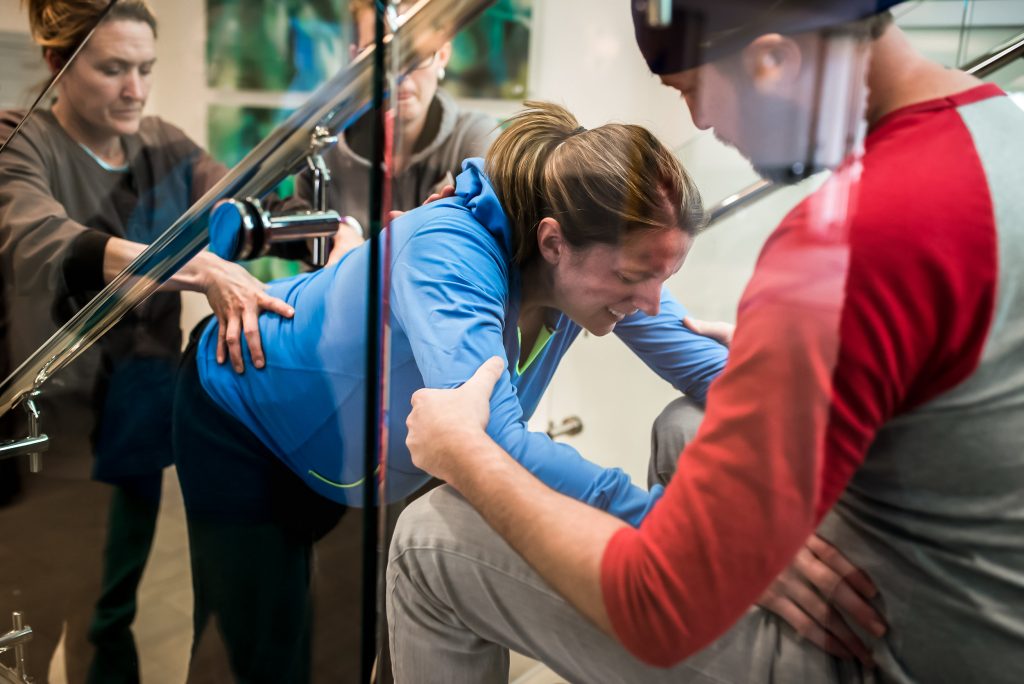Interested in a drug-free birth? Here’s are some tips!
It’s amazing to me how quickly the mothering instinct sets in. Perhaps when the pregnancy test shows up positive, or seeing that tiny little body on the ultrasound screen, or especially feeling baby kick for the very first time. Something changes inside us at some point and there is an undeniable urge to protect, nurture, and sacrifice for the health and wellbeing of our babies.
There’s an article published in the Journal of Perinatal Education entitled “Safe, Healthy Birth: What Every Pregnant Woman Needs to Know” in which Dr. Judith A. Lothian describes six practices to ensure the safe arrival of that sweet bambino through the miracle of birth, we’ve added a bonus seventh!
Let Labor Begin on its Own
As the baby nears the end of gestation it puts on layers of protective fat, it moves down into position, and the cervix ripens on its own. The uterine muscles also prepare for that approaching influx of oxytocin. Inducing labor before these vital things happen naturally can really put a lot of strain on mother and baby as things are forced into motion (sometimes unsuccessfully). There is a greater risk of shoulder dystocia, birth augmentations, c-sections, and fetal heart distress. If the pregnancy is progressing normally, it’s best to wait it out until mom’s body and baby’s body are ready and ripe all on their own. Read more about Types of Induction—Risks and Benefits
Move During Labor

Nature intended for women to move during labor. Strong contraction waves and pain are signals to mom that moving to more comfortable positions will help labor progress. And it will, as more oxytocin is released in response. Moving has been associated with shorter labors, less injury and harm to baby, and less blood loss for mom. Walking in early labor can also decrease the chances of birth interventions like forceps, cesarean, or vacuum extraction. Types of Medical Interventions—Informed Consent and Risks/Benefits
Get Some Labor Support
If a woman is surrounded by a trusted team of people who can advocate, support, and empower her, it provides an almost sanctuary for her, even in a sterile hospital room. She will be able to better relax, cope, and focus on laboring, all resulting in less interventions and complications. Women who labor with doulas, midwives, friends, or family present have higher rates of spontaneous vaginal birth, less requests for pain medication and an overall positive view of her birth experience. Emotional support is as vital as physical support during labor. If you’re on the fence about getting some extra help, do it! Read Do I Need A Doula and How to Find One?
Decline Unnecessary Interventions
These days hospitals and OBs can find themselves on autopilot, motivated by policies and procedures, rather than the reality of what is really going on. Continuous electronic fetal monitoring (EFM) is pretty standard in hospitals. This can result in unnecessary c-sections for moms. Contrastly, intermittent monitoring has no increased risk for the baby, and decreases incidence of instrument vaginal delivery and c-sections.
Epidurals, and listen up because this is very interesting, interfere with labor because there is no pain. The brain, not processing pain, does not receive the signal to keep releasing oxytocin, therefore moving things along. Labor slows down. Pitocin is needed to induce labor. Pitocin induced contractions are unnaturally strong. Baby and mom don’t respond well, more interventions are needed. Epidurals are associated with more tearing, longer labors, instrument delivery and increased cesarean risk.
Avoid Laying on the Back to Birth, and Wait to Push until you Feel the Urge
Giving birth while laying on the back is so convenient for doctors, but can be bad for mamas. The pelvic opening narrows and it’s much harder to get the baby in the right position to make its entrance, not to mention it puts mom at greater risk of tearing. Doctor-directed pushing (“Push NOW! Hold it for 1-2-3-4….”) puts incredible strain on the pelvic floor muscles and is stressful for baby. Find a better position—side lying, squatting, kneeling, all fours, etc. Baby will let you know when to push, and you’ll be in better shape when it’s all said and done. That being said, some women DO find being on their back to be the most comfortable and some really thrive with a little directed pushing so as always be informed of your options and follow your instincts in the moment.
Mother-Baby Bonding is Vital

It’s ideal to keep that sweet little babe right next to mama for the foreseeable future. It’s better for baby as it results in better body temp regulation, stable heart rates, better nursing. And it’s better for mom as it results in less hemorrhaging and lots of oxytocin-induced bonding with baby. Plus, you get the added bonus of staring in awe at those sweet baby cheeks. Who doesn’t want that?
Listen to Birth Stories
We constantly receive messages of thanks from mothers who benefitted from listening to The Birth Hour during their pregnancy. It helps them feel prepared and pull from the experiences of women who have face similar birthing experiences.
There it is! Seven key practices for a natural birth experience. Good luck mamas. You can do this!
This guest post was written by Austyn Smith.


No Comments yet!